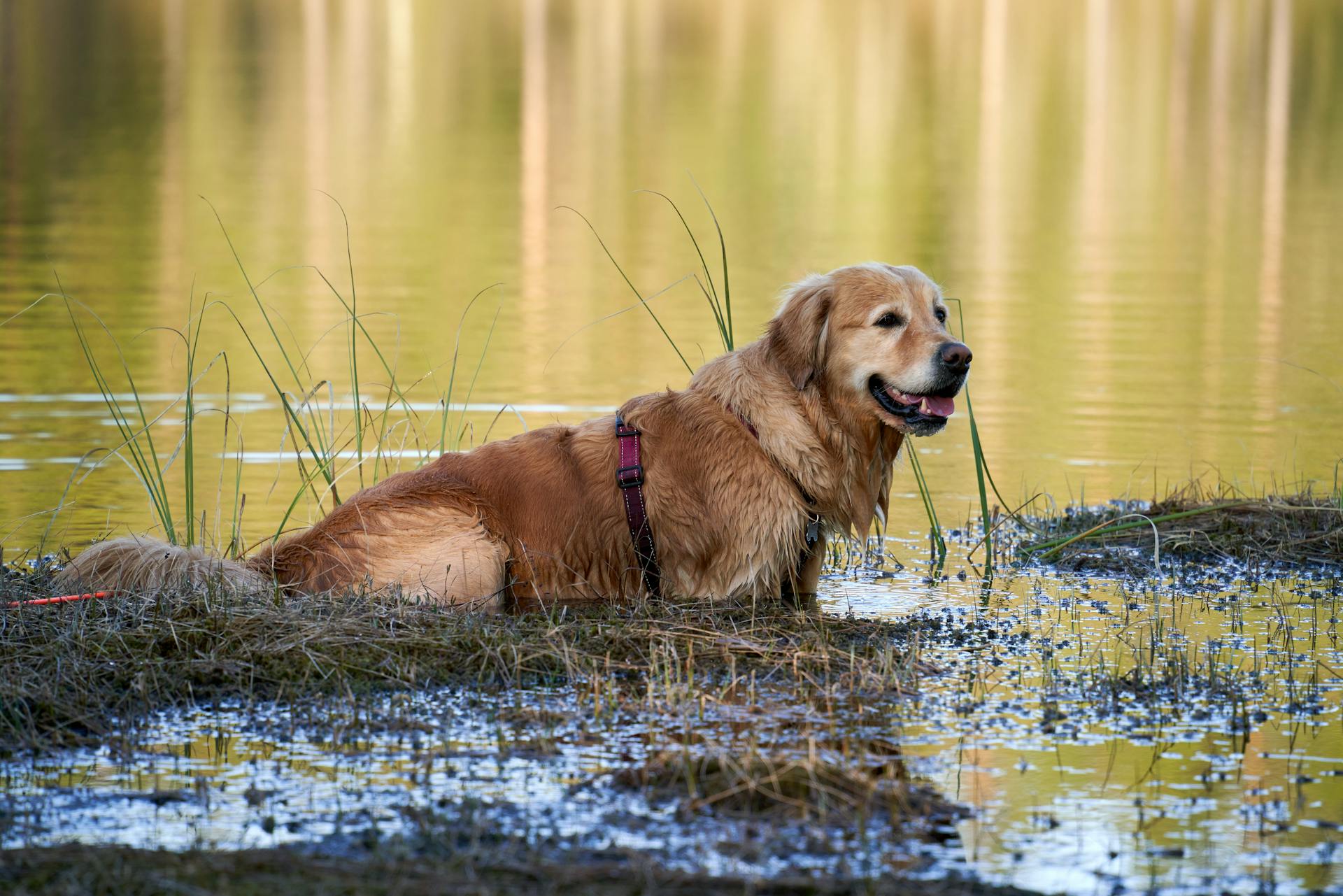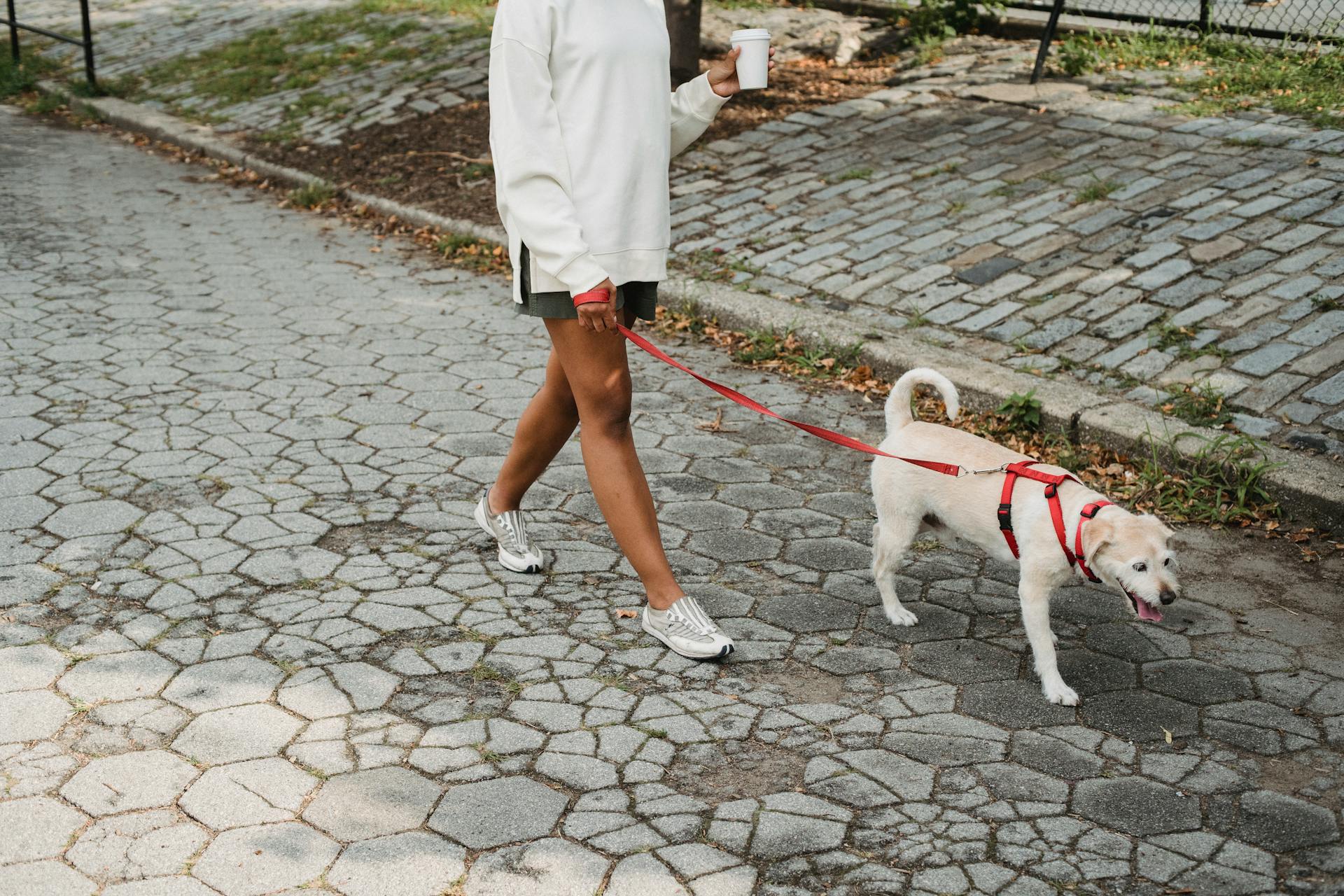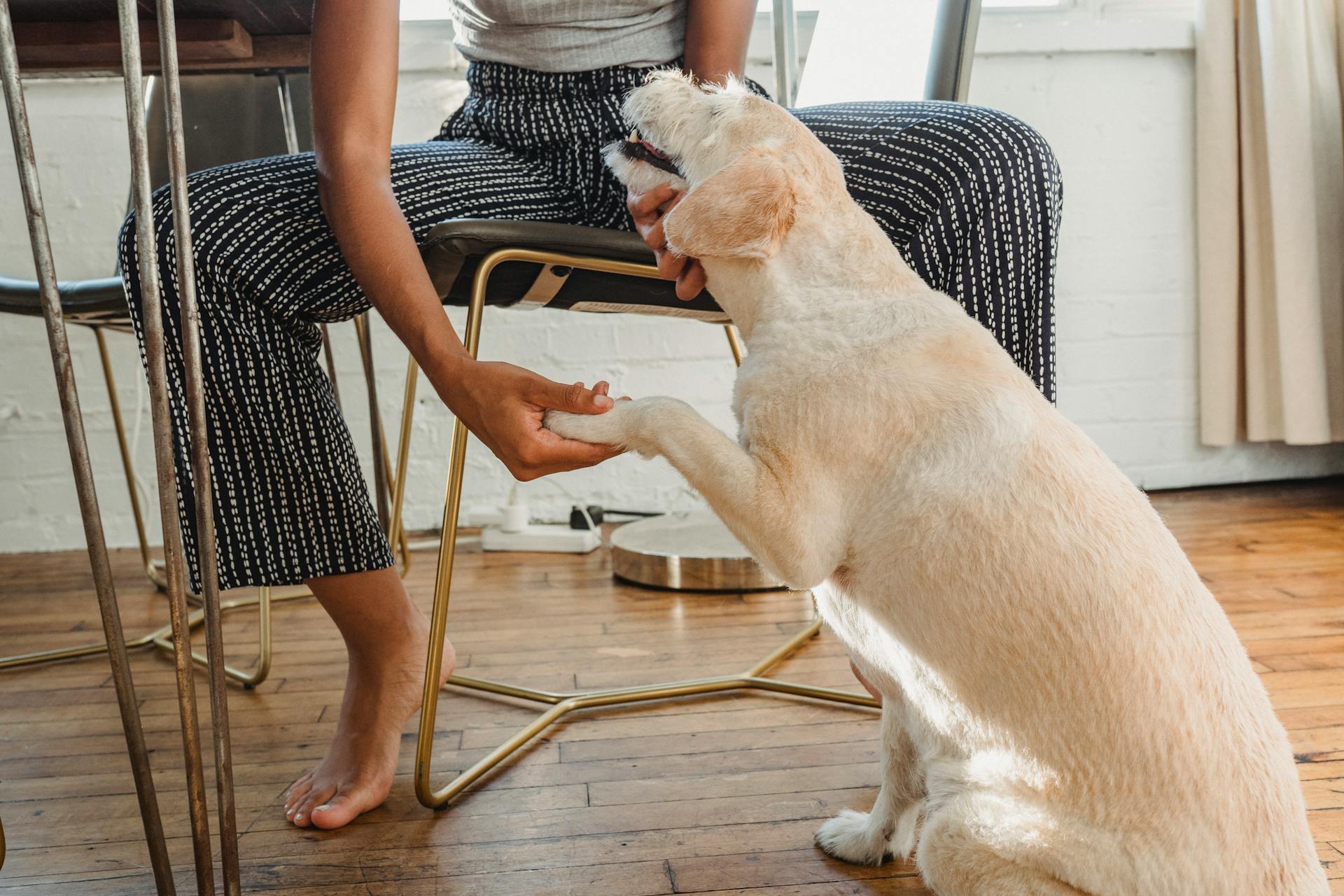
Breeding a female dog in heat requires careful timing and observation of her heat cycle.
A female dog's heat cycle typically lasts 2-3 weeks, with the fertile period being around 5-7 days.
During this time, she'll exhibit physical changes such as swelling of the vulva and a bloody discharge.
Her behavior may also change, becoming more receptive to males.
The heat cycle usually starts with proestrus, a 7-10 day period where the female dog's body prepares for breeding.
Proestrus is characterized by a bloody discharge, and the female dog may not be receptive to breeding yet.
As the cycle progresses, the female dog enters estrus, the fertile period, where she's ready to breed.
Estrus typically lasts 5-7 days, during which time she's fertile and can be bred.
After estrus, the female dog enters diestrus, a period of about 60-90 days where she's not fertile.
It's essential to recognize the signs of heat and know when to breed her to increase the chances of a successful pregnancy.
Suggestion: When Does a Female Dog Get Her First Period
Understanding the Female Cycle
A female dog's heat cycle can last weeks, and it's essential to know the different phases to determine when she's fertile.
The heat cycle is made up of three phases: proestrus, estrus, and anestrus. Proestrus is the beginning of the heat cycle, characterized by swelling of the vulva and a blood-tinged vaginal discharge. This phase can last anywhere from a few days to four weeks, on average seven to 10 days.
During proestrus, a female dog will not allow mating to occur, but you may notice physical changes like continued swelling of the vulva or bloody discharge.
The estrus phase, also known as "heat", is when the female dog will allow mating to occur. This phase lasts anywhere from three to 21 days, with an average length of nine days.
A female dog typically matures and starts her first heat cycle when she's six months old, but it can vary depending on the dog's size and breed. Miniature breeds tend to grow faster and may have their first cycle as young as four months.
Here's a breakdown of the phases:
- Proestrus: swelling of the vulva, blood-tinged vaginal discharge, lasts 7-10 days
- Estrus: allows mating, lasts 3-21 days
- Anestrus: no signs present, lasts 4-5 months
Recognizing a Female in Heat
A female dog in heat can be a bit of a mystery, but there are some clear signs to look out for. Swelling of the vulva is usually the first symptom, followed by bloody vaginal discharge.
Male dogs can detect pheromones in a female dog's vaginal and urinary secretions, which is why they often seem more attracted to her during this time. However, it's essential to note that a female dog in heat is not necessarily receptive to mating during the proestrus stage.
Physical changes can be a dead giveaway, such as a swollen vulva, bloody discharge, or a change in the vulva's color. You may also notice that your dog is more clingy or aggressive towards male dogs.
Behavioral changes can be just as telling, including courtship-like behavior, increased physical activity, or urinating in the presence of a male dog. Your dog may also flag, or lift her rear towards male dogs, or move her tail to the side.
For more insights, see: Female Dog Vaginal
Here are some common signs to look out for:
- Swelling of the vulva
- Bloody vaginal discharge
- Increased clinginess
- Changes in appetite
- Tail tucking or flagging
- Flirting with other dogs
- Increased vocalizing, especially moaning, whining, yowling, and crying
- Peeing more frequently than normal
These signs can help you identify when your female dog is in heat and take steps to either prevent pregnancy or prepare for breeding. Keep in mind that a typical, visible heat cycle lasts for 2-3 weeks, and a female dog is not necessarily fertile throughout the whole heat.
Determining the Right Time
A female dog can first experience her heat cycle as early as six months of age, but this varies with breed. Smaller dogs may first experience their heat cycle earlier than larger dogs, who may not experience theirs until up to two years of age.
The duration of a heat cycle can vary between dogs, but on average, dogs go into heat every seven months. This means that if you're planning to breed your dog, you'll need to keep track of her cycles to determine the best time.
Broaden your view: How to Tell the Age of a Female Dog
To determine the right time to breed your dog, it's essential to know the length of her heat cycle. If you keep track of your dog's heat cycle and know her cycle's length, you can use a dog heat cycle calculator to predict the duration of the current cycle and the range of dates when the next heat cycle should happen.
You might enjoy: Dog Names Female Start with S
When to Go In?
Dogs go into heat every seven months on average, but this can vary greatly from one dog to another.
Their reproductive cycles are much different from humans, lasting about seven months instead of 28 days.
Each dog is unique, just like humans, and their cycles can vary from one month to another.
Some breeds may even experience variations in their cycles from one year to another.
When Do Go?
Dogs can go into heat starting at a surprisingly young age. The timing of the first heat varies by the size of the dog.
Small dogs can go into heat as soon as six months old. For giant breeds, it's more like 1.5 years.
Having an intact male in the house will bring heat in faster for a female. It can be as young as four months old for small dogs.
Intriguing read: Old Fashioned Dog Names Female
When to Start

If you're a new dog owner, you might be wondering when your furry friend will go into heat for the first time. The answer is surprisingly young - as early as six months of age for small dogs.
The timing varies by breed size, with smaller dogs experiencing their first heat cycle earlier than larger dogs. For instance, a smaller dog may first experience their heat cycle as early as four months old, while a giant breed may not experience theirs until up to two years of age.
Dogs will continue to experience heat cycles throughout their lives, but the time between each cycle will increase with age. This means that as your dog gets older, you can expect her heat cycles to become less frequent.
To give you a better idea, here's a rough estimate of when dogs typically go into heat based on breed size:
Keep in mind that these are just general guidelines, and the best way to predict your dog's heat cycle is to observe her and keep close notes. However, even with careful tracking, young dogs' cycles might be irregular.
Duration and Age
The duration and age of a female dog's heat cycle can vary significantly.
The proestrus and estrus stages can last anywhere from two to four weeks collectively.
The age at which a dog's first heat occurs is another important factor to consider.
Small dog breeds, for instance, tend to come into heat at a relatively young age, around 6 months old.
Dogs of larger breeds, on the other hand, may not have their first heat until they're 18-24 months old.
If this caught your attention, see: How Old Must a Female Dog Be to Breed
How Often Are
Dogs can go into heat once every six months, or about twice a year.
The frequency of a dog's heat cycle can vary depending on their breed size, with smaller dogs going into heat more often than larger dogs.
A dog's heat cycles may seem irregular when they first start to experience them, especially if they're a smaller breed.
Female dogs typically go into heat for around 2-3 weeks, but this can vary depending on the individual dog and their breed.
Knowing when your dog is in heat is crucial for managing their behavior and preventing unwanted breeding.
Suggestion: Why Does My Male Dog Lick My Female Dog's Pee
How Long Does It Last?

The heat cycle in dogs can last anywhere from 18-21 days, which is a relatively long period.
This duration can vary based on your dog's breed, size, and age.
The proestrus and estrus stages of the heat cycle can last anywhere from two to four weeks collectively.
However, once your dog begins to have regular cycles, you can expect them to stay in heat for roughly the same amount of time, around 18-21 days.
At What Age?
Dogs can have their first heat when they're as young as 6 months old or as old as 24 months of age.
Size plays a major role in determining the timing of a dog's first heat. Small dog breeds tend to have their estrus cycle at an earlier age.
The age range for a dog's first heat can vary significantly, with some small breeds experiencing it as early as 6 months old.
Readers also liked: Small Female Dog
Frequently Asked Questions
How long after a dog starts bleeding is she ready to breed?
After about 9-10 days of bleeding, a female dog is likely to be at her most fertile. This fertile window can last up to 20 days, depending on the individual dog
How many days is a dog in heat fertile?
A dog is fertile for approximately 5 days during her heat cycle, which typically starts around 9-10 days after she goes into heat. Knowing this window can help you plan breeding or prevent unwanted litters.
Sources
- https://www.dailypaws.com/dogs-puppies/health-care/dog-neutering-spaying/how-long-are-dogs-in-heat
- https://www.petmd.com/dog/general-health/dog-in-heat
- https://www.businessinsider.com/guides/pets/how-often-do-dogs-go-into-heat
- https://www.omnicalculator.com/biology/dog-heat-cycle
- https://www.fourpaws.com/pets-101/health-and-wellness/female-dogs-in-heat
Featured Images: pexels.com


